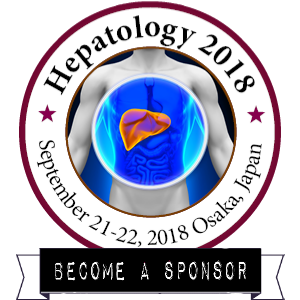Jong Won Kim
Chonbuk National University, South Korea
Title: Inhibition of glutathione peroxidase-4 alleviates non-alcoholic steatohepatitis by suppressing lipid peroxidation in mice
Biography
Biography: Jong Won Kim
Abstract
Reactive oxygen species (ROS) plays a key role in non-alcoholic steatohepatitis (NASH). Inactivation of glutathione peroxidase-4 (GPX4) induces ferroptosis, which is an iron dependent and lipid peroxidation-mediated non-apoptotic form of cell death. The aim of this study was to investigate the impact of GPX4 on the progression of NASH at an early stage. C57BL6/J mice were fed a methionine and choline-deficient (MCD) diet for 10 days to induce NASH. To determine the role of GPX4 on NASH progression, the inhibitor (RSL-3) and the activator (sodium selenite) of GPX4, the inhibitor of ferroptosis (Liproxstatin-1, Lip-1) and an iron chelator (deferoxamine mesylate salt, DFO) were used in current experiments. RSL-3 treatment showed decreased hepatic expression of GPX4, 12/15-lipoxygenase and apoptosis inducing factor, indicating that GPX4 plays, a key role in NASH-related lipid peroxidation and its-associated cell death. Consistently, serum biochemical analysis showed increased serum alanine aminotransferase (ALT) and aspartate aminotransferase (AST) levels in MCD-fed mice with RSL-3 treatment. In line with these results, NASH-related hepatic steatosis, inflammation and apoptosis were also increased in MCD-fed mice with RSL-3 treatment. However, sodium selenite treatment showed an opposite and protective effect on NASH progression in MCD-fed mice. Administration of DFO showed significantly lowered NASH severity and abolished the harmful effects of RSL-3-mediated GPX4 inhibition in MCD-fed mice. Finally, Lip-1 treatment showed repressed hepatic lipid peroxidation and its associated cell death resulting in decreased NASH severity. Consistent with in vivo findings, similar results were observed in palmitic acid-induced in vitro NASH condition. Taken together, we conclude that ferroptosis might play a major role in development of NASH. These results suggest that modulation of iron-mediated ferroptotic cell death might pave the way for a new strategy in treating NASH.

